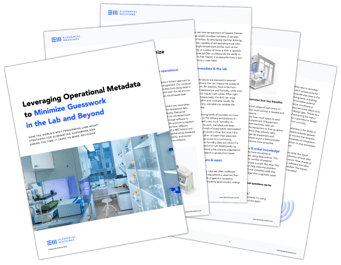
By Elemental Machine
Though unlikely to populate headlines in scientific journals or conference keynotes, operational metadata plays a crucial role in the scientific method. And now, it’s more accessible than ever.
All too often, scientists are left pondering a laundry list of reasons why one of their experiments failed or spending countless hours attempting to pinpoint the cause of pesky outlier data points. The common scientific idiom “causation does not equal correlation” is all too familiar to those living in the scientific world. The confident assignment of cause and effect between experimental variables is the foundation of science that leads to the discovery and development of life-saving medicines, innovative technologies, and beyond.
But how can one gain confidence in experimental results? It starts by controlling for confounding factors – those things that impact science but are not of interest to the scientific hypothesis at hand. If operating conditions are optimal and equipment is running to specification during experimentation, the impact of confounding factors can be significantly reduced and guesswork can be eliminated.
The implications of this are felt throughout entire organizations. From a reduction in the number of times the same experiment has to be performed (e.g. cost of reagents and personnel hours) to the complexity of data analysis (hours spent on digging through experimental data and redoing analysis), collecting and leveraging operational metadata in the scientific process can deliver significant process efficiency.
Operational metadata and quality of experimental results
Operational metadata in the laboratory encompasses the environmental conditions and equipment-specific data that inform operators about the reliability and reproducibility of experimental results. For example, collection of equipment metadata via hardware or software integration can unlock insights about equipment status such as out-of-range ultra-cold storage, unacceptable CO2, or internal humidity levels. Another key piece of operational metadata is ambient conditions like temperature, humidity, pressure, and light.
Each of these factors individually can wreak havoc on any given experiment, much less an accumulation of them. The first step in controlling for these factors is to collect the data. This will enable operators to gain a baseline understanding of operating conditions.
To move even closer to eliminating the confounding nature of these factors, teams can implement alerting and monitoring systems, such as Elemental Machines, which provide state-of-the-art intelligence to help operators keep operating conditions and equipment performance at optimal efficiency.
The bottom line is that operational metadata is impacting your science today. The sooner your team starts collecting and leveraging this data, the sooner you can gain confidence in your results and enjoy the fruits of your labor.
To learn even more about operational metadata, read the whitepaper:
